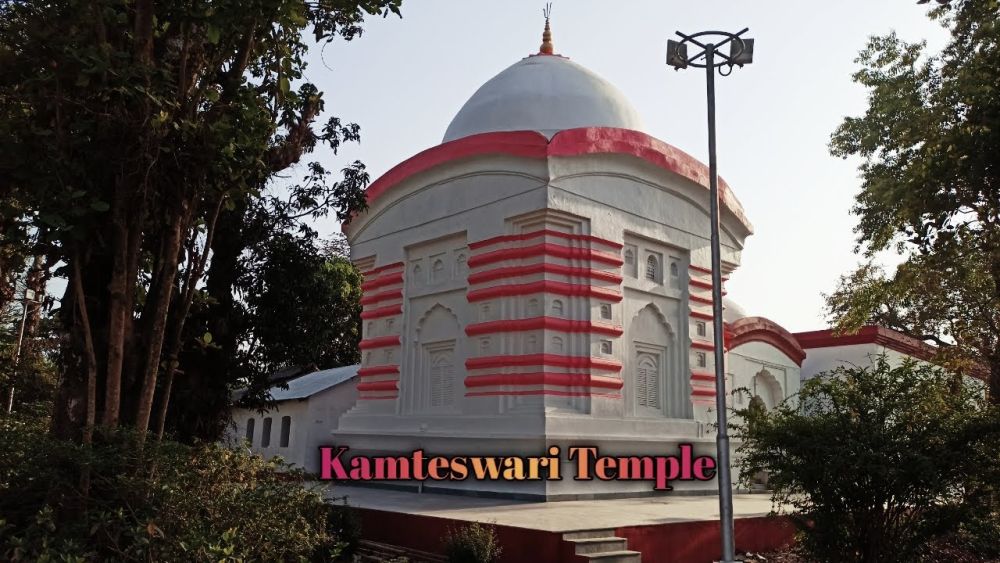

The Kamteswari Temple is an emblematic spiritual destination located in the quaint town of Gosanimari, which forms part of the Cooch Behar district in West Bengal, India. The temple is dedicated to the goddess Kamteswari, a manifestation of the Hindu goddess Kali.
Historically, the region of Cooch Behar played a significant role as a princely state and has been influential in shaping the cultural and religious landscape of Bengal. The original Kamteswari Temple was built during the 17th century by Maharaja Pran Narayan. Over the centuries, the temple became a beacon for Hindu pilgrims and was integral to the religious tapestry of the area.
The temple, though now in ruins, stands as a testament to the architectural prowess of the Koch dynasty. The remains of intricate terracotta carvings suggest that the Kamteswari Temple was once a magnificent structure with a rich artistic heritage.
The Kamteswari Temple saw a decline after the fall of the Koch kingdom but has been the focus of restoration efforts in recent years. The West Bengal Tourism Development Corporation has worked towards conserving the site and promoting it as a historical destination for those interested in the cultural and religious history of Bengal.
Tourism at Kamteswari Temple aligns with the broader travel trends focusing on sustainable and experience-based travel. Visitors to the temple are often those who seek a connection with India's ancient past, spiritual enlightenment, or an appreciation for historic architecture. The temple's serene atmosphere provides a respite from the bustle of modern life, making it appealing to those in search of tranquility.
In recent years, increased accessibility and awareness through digital platforms have transformed how tourists interact with historical destinations like Kamteswari Temple. The advent of virtual tours and detailed online histories allows a wider audience to explore the temple's significance before visiting.
When planning a visit, it's essential to respect the local customs and traditions. The best time to visit is during Durga Puja, a major Hindu festival, when the temple comes alive with cultural festivities. Travelers can also explore the nearby attractions, including the Rajbari Palace and Madan Mohan Temple in Cooch Behar town.
Efficient transportation facilities by road and a variety of accommodations in the Cooch Behar district cater to the needs of tourists, making Kamteswari Temple easily accessible for those eager to dive into the depths of India's rich spiritual and architectural heritage.
The Kamteswari Temple stands as a poignant piece of history and continues to attract tourists with its blend of ancient charm and religious significance. With the support of local and state initiatives, the temple serves as a cultural cornerstone for those visiting West Bengal and contributes to the fabric of India's diverse tourism landscape.